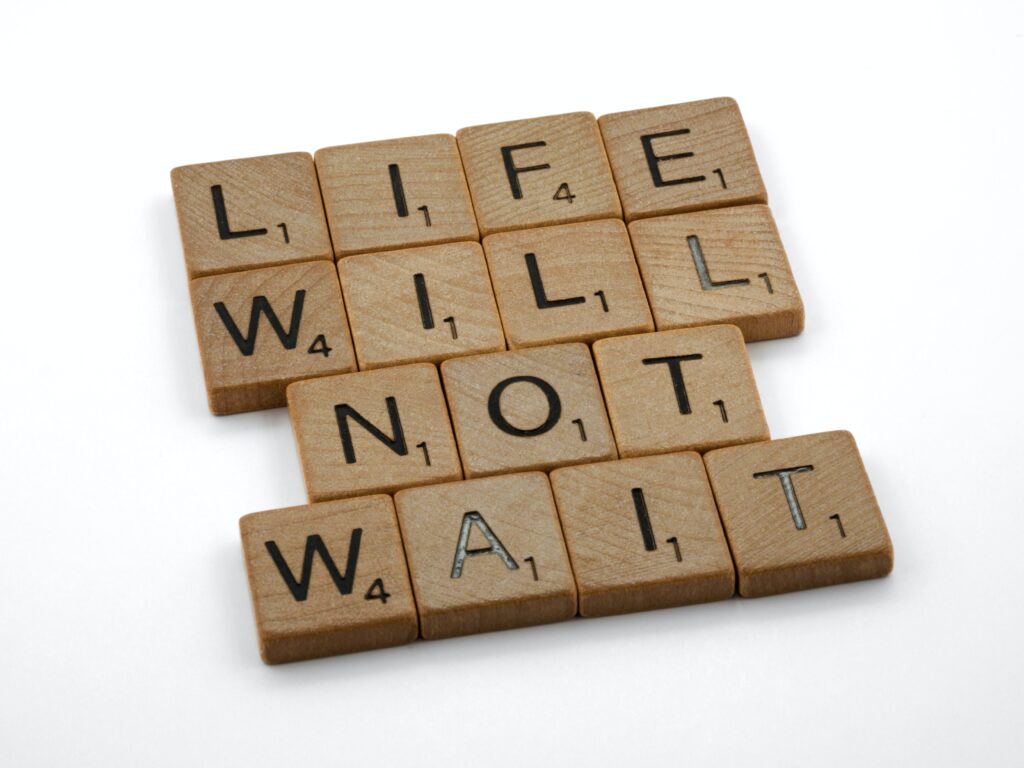Can you use pain to overcome procrastination? Yes, you can.
In this article, I will teach you how to use pain to find self-sabotaging thoughts, and how to use it to help you overcome procrastination.
Years ago, I read Awaken the Giant Within, and there was one sentence that really hit me.
Change happens when the pain of staying the same is greater than the pain of change. Tony Robbins
It isn’t true for everyone, but for many people, they only make big changes when the pain of their current situation forces them to do so.
- They quit smoking once they have been diagnosed with cancer.
- They lose a lot of weight after having a heart attack.
- They change their bad attitude after losing a good job.
- They get in shape after an emotional breakup.
- They finally go and find a job because the money has run out.
Our primitive brain doesn’t like pain and strongly urges us to avoid it. It prefers complacency and works against us when we want to change because change is risky and takes effort. The primitive brain would prefer that we stick to our current routine even though it might not be in our best interest to do so.
However, when the pain of remaining the same is bigger than the pain of change, we find it easier to push ourselves to make new changes. Our primitive brain wants to help us get away from the pain we are experiencing even though it’ll require effort and taking on new risk.
There are several ways we can use this concept to help us act and move forward.
- You can use it to identify and see how your thoughts are leading to self-sabotage, and then you can use it to help you change the focus of those thoughts.
- You can also use it to help you get started with any task you are putting off.
* * * *
How to Identify Thoughts that are Making it Difficult to Change
One way to use the concept of pain to overcome something you want to change is to identify how your thoughts are affecting you when you want to make the new change. Once you have identified how your thoughts are affecting you, then you can use this concept to help you change.
Here is how you do it.
When you think of a big goal that you want to work on, what are the first thoughts that pop in your head?
Do you focus on what you will have to give up? Do you focus on how hard it will be?
When someone tells me that they want to quit smoking, but they are worried about gaining weight or that they are worried that they won’t be able to release stress, I know that they won’t stop smoking. Their minds are too focused on the benefits that they feel that they will lose if they were to stop.
If someone tells me that they want to lose weight but tell me that we might all die tomorrow, implying that they don’t want to spend their final moments missing out on their favorite foods, I know that they’ll never stick to any diet. Convincing them to do so will be very difficult.
Someone might tell me that they want to change jobs and make more money. When you ask them what is preventing them from doing so, and they go on about missing their colleagues or telling me how easy it is to do their job, I know that they will not change jobs unless something just happens to fall into their lap.
In all these situations, they are focused on the positives of their current situation, and these positives are outweighing the pain of wanting to change.
On the other hand, if someone starts to list why doing something will be hard to do, and they go on about the effort required to get it done, I also see that they will probably give up somewhere down the line.
They won’t change jobs because finding another job is too troublesome. They will have to make a resume, do interviews, maybe learn new skills, work hard to gain trust in a new company, etc.
They won’t start exercising because they first need to find a good class, buy equipment, make time, etc.
They won’t start a new business because they will have to learn new things, face criticism, and possibly face failing. It will require a lot of time and effort.
In these cases, the effort required to change is more painful than the pain of staying in their current situation.
Look at your own thoughts and see if you fall into one of these two areas. Are you focused on what you will lose? Are you focused on how difficult it will be to change? If so, you are setting yourself up for failure.
* * * *
What can you do to overcome these kinds of self-sabotaging thoughts?
A good way to help you overcome your thoughts that are leading to failure is to make a list of negative things that will happen if you do not go through with your plan. Make the list as long and as detailed as you can. You should make your list of pains as long and terrible as you can so that it will help you override wanting to stay complacent. The stronger the emotions you tie to the negative things, the more effective it will be in helping you change.
I did this with my writing.
I knew that writing was important to my future success. It could help me earn income in various ways. However, I kept researching, editing, and writing, but I would never publish my content.
My mind was focused on both the challenges I faced to get started, and it was focused on the negative things that might happen once I started. I was fearing my writing wouldn’t attract readers. I was fearing that I would be criticized. I was fearing that I would fail at writing. I was fearing I would run out of things to say.
I was focusing on the pain that might come and not the pain I would be escaping. My brain was working against me because it wanted me to avoid the pain.
I sat down and created a list of my worries and fears and explored the answers. Were these fears really true? What if they became true; what would I do? This helped to make me realize that they were not that bad and lessened their potence.
Next, I listed out all the negative things that I could think of if I didn’t publish my writing. I wrote out whatever popped in my head: If I never try, I will never know and I will criticize myself. I will constantly beat myself up. I will lose confidence in who I am. I will not be able to do what I dream. I will be stuck as I am and wondering years later why, oh why, didn’t I just choose to consistently publish.
I made the list as long as possible and would add to it if anything else popped up later. I wanted those pains to be far greater than staying in my current situation.
I kept a copy of this on my phone and would read it any time I felt hesitancy to be completed with an article, or any time I delayed in getting the article out there and promoting it.
By focusing on the all the pains I would encounter by not following through, I found it much easier to get started and to publish my work.
* * * *
Another way I use the pain concept is to help me get started doing my things.
I have found it be very useful for helping me get out of bed quickly. Before, if I woke up early, I would spend time on my phone going through all my messages and news feeds that came in while I was asleep. I would then be irritated with myself for wasting my mornings.
I used to try to motivate myself by thinking of the positive things that would happen if I were to get up early: I will feel better about myself. I will not be irritated. I will be productive and can spend my evenings relaxing.
However, I often found that these were not motivating enough to keep me from looking at my phone.
After thinking about the pain concept, I started going through my mind of the negatives I would feel instead: I will feel irritated with myself. I will be disappointed with not following through on what I want to do. I will lose a lot of valuable time. I will get less done in the day. I will lessen my self-esteem.
Once I started going through the list of pains that I would encounter if I didn’t get up, I found myself getting up almost immediately.
I started doing this anytime I felt myself hesitating to get started on things.
Not only getting up, but I would apply this to any task on which I had hesitations or doubts. I found that doing this helped me to get started with my tasks.
* * * *
Summary
Make the pain of your situation stronger than the pain of overcoming your situation. When you do so, it will be easier to change.
First, identify what thoughts you have about the change you want to undertake. Are you focused on the lost benefits? Are you focused on how hard it is going to be to change? If so, change will be harder.
Once you have understood your thoughts about change, make out the longest list that you can of what pains you will have if you do not change. Put down every negative point that you can think of. Make the pains outweigh whatever positives you associate with the thing you want to change, and make them outweigh the pain of the effort that will be required to change.
Review this list any time you feel hesitancy about following through on your plan to change. Use it to help you get started and to move forward.
Use the pain concept to also help you get started with any task on which you are delaying. What negative feelings will you have if you delay? What kind of negative things will your delay cost you?
* * * *
Get Started Today
What are areas of your life that you have always wanted to change, but you do not do anything about it?
What things are you procrastinating on at this moment?
I encourage you to make a list of pains and how it will hurt you if you do not change your life. Make it emotional and read this list every day when you feel like you do not want to move forward.



